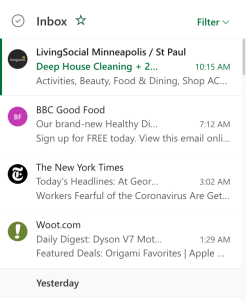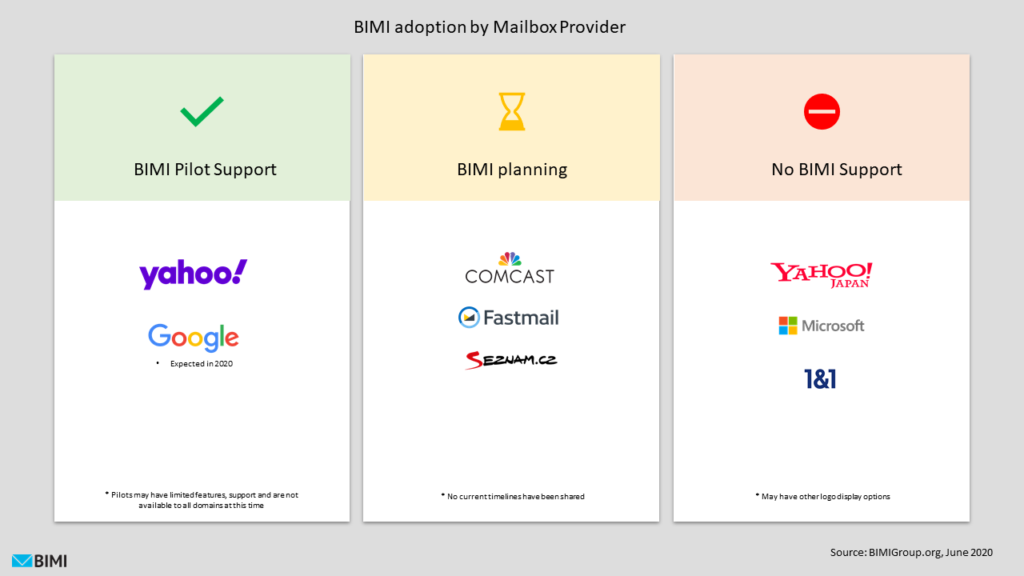4 Deliverability Trends to Look Out For
If this year has taught me anything, predicting anything is a waste of time. It’s also taught me to be careful what I wish for: working from home? Check. Chance to spend all day in my pajamas? Check. Getting some severe cabin-fever? Check.
So, with that being said, I’m writing this blog post with some trepidation; however I feel pretty confident (well, as confident as one can be right now) that these are 5 deliverability-related trends that email marketers cannot ignore.
Brand Identity Message Indicators (BIMI) adoption
BIMI is a win-win for your customers and you. It enables your logo to be displayed in recipients’ inboxes when your email meets certain security specifications. This makes the email instantly recognizable in the inbox, giving marketers increased brand awareness, while customers can more easily identify verified email messages. For an example of this, look at the following screenshot from my inbox, where LivingSocial, the New York Times, and Woot! all have their logos displayed.
Before you rush off to get BIMI implemented, know that it is an emerging standard. As of June 2020, only Yahoo and Google are trialing the standard, but with more ISPs in the planning stage it’s only a matter of time before it becomes widespread.
Image Courtesy of BIMI Group
One thing to note is that Microsoft doesn’t currently support BIMI and may not any time soon. They have their own program called Microsoft Business Profile, which serves a much wider goal of helping companies to manage their presence across Microsoft products, including email. Because of this, it may be some time until the BIMI standard gets adopted by Microsoft, if it does at all.
IP reputation deemphasized
This has been around a while, and I’m hoping awareness is becoming more widespread, but the relationship between your IP and deliverability. Because bad email practitioners have traditionally just swapped out their IPs as a quick-fix way to deal with blocked emails, ISPs are getting better and better at tracking email engagement by email domain. Therefore, domain reputation is now becoming more important than IP reputation.
Now, bear in mind that is an US- and Europe- centric view. ISPs in other countries, such as China, are still very IP-focused; however expect this to change in time.
IP Volume Management
No blog post in 2020 would be complete without mentioning some impact from COVID-19. Many marketers have drastically reduced their email volume during this period with the expectation of returning to historical volumes once the pandemic is over.
Marketers would do well to take care, as predictable email volumes is one of the factors that goes towards good email deliverability. If you’ve furloughed your email program for several weeks, then you’ll need to go through IP Warming again. You won’t need to go through a full warming, as your email program has been sending some email, but you’ll definitely need to slowly ramp up to your former levels.
Content AND Code
“Free” and other such words have long been considered SPAM trigger words, bound to send one’s email into the SPAM folder. That’s no longer true. ISPs now use complex algorithms to decide what emails to put into BULK. While content may figure in those calculations, the placement of a reputed spam trigger word in your subject line is unlikely to tip the balance. Even SPAMAssassin, which is an open source SPAM filter, doesn’t flag free as a trigger word. That doesn’t mean you should use such words with impunity, but it does mean that we, as marketers, need to be as frugal about its use.
One thing that is becoming more important is email code. While many marketers know that text-to-image ratios and URL reputation have impacts on deliverability, the actual code structure of the email is now playing a role, as badly coded emails are often used by SPAM emailers. Apart from the deliverability effect, badly coded email also provides a poor experience for recipients, who are, in turn, less likely to engage which then negatively impacts your deliverability.
If you need any help with these or any other marketing technology trends, feel free to reach out to us at Relationship One.
Thank you for subscribing!




